Downer Avenue and Two “Spite” Houses
Both tales of revenge have a connection to Judge Jason Downer.
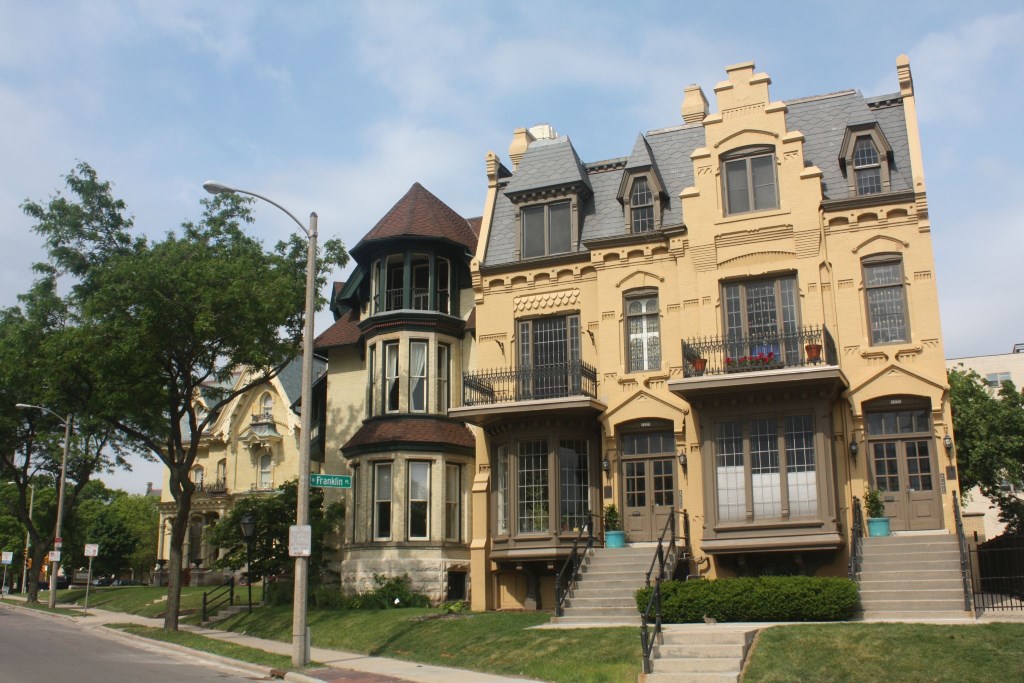
Hinton’s townhouse on the right, the spite house in the middle and Downer’s house on the left. Photo by Carl Baehr.
Revenge is usually the motive for building a “spite house,” and two of the known Milwaukee spite houses were no exceptions. One was built by Judge Jason Downer and the other was constructed on the street named for the judge, Downer Avenue.
At the age of 29, Jason Downer arrived in Milwaukee in 1842 with a law degree from Dartmouth College and promptly set up his practice. James S. Buck, a Milwaukee historian and contemporary of Downer, said the lawyer “loves money, and can keep it as well as make it.”
Downer purchased and edited the Milwaukee Sentinel but, finding that it did not generate wealth, sold it after only six months. He was appointed to the Wisconsin Supreme Court by Governor James Lewis in 1864 and then was elected to the same body the next year. But being a Supreme Court Justice did not do much to increase his bottom line, so he resigned two years into his six-year term.
In 1869, Downer purchased the lot on the northwest corner of Juneau and Prospect Avenues, where he built the cream-city brick Victorian Gothic structure still standing there. The judge moved into the mansion when it was completed in 1874. That same year, twenty-year old Francis Hinton purchased a lot with a two-story frame home north of Downer’s. Over the next few years the young investor, who lived on Cass Street with his well-to-do parents, razed the home and built the side by side, three-story townhouse at 1229-1231 N. Prospect Avenue in the High Victorian Gothic style. It was completed in the late 1870s and both units were leased.
Because Hinton’s townhouse was larger and took up more of the lot than the frame structure that it replaced, and because it was built on the southern lot line, Downer’s view to the northeast was more obstructed than it had been. He is said to have missed seeing the fountain that was bubbling in what is now called Burns Commons.
So to get even with Hinton, Downer built his spite house. The Queen Anne-style residence at 1223 N. Prospect abutted the southern part of Hinton’s townhouse and cut off the southern view and much of the natural light to the southern unit which was being rented by the widow of Eliphalet Cramer, the man for whom N. Cramer Street is named.
Downer did not have long to enjoy his malice; he died in 1883 at about the same time his spite house was completed. His house, the spite house, and Francis Hinton’s townhouse are all listed in the National Register.
Downer was a fervent supporter of women’s education and donated generously to the Wisconsin Female College at Fox Lake, Wisconsin and served on its board of trustees. Both he and his wife left a significant portion of their estates to the college with the proviso that the school’s name be changed to Downer College, which was done in 1887.
In 1895, the college merged with the other female college, the Milwaukee Female College, to form Milwaukee-Downer College, which selected a site for their new campus at Glen and Hartford Avenues (now part of the UW-Milwaukee campus). In 1898, while construction on the campus was underway, the Common Council changed the name of Glen Avenue to Downer Avenue. The college opened its new facilities the next year.
Francis Hinton was financially successful and died wealthy. Unfortunately, the riches did not bring him happiness; while on a trip to France for his health, he put a pistol to his head on a Paris street corner, committing suicide at age 42.
Another spite house was built on the northwest corner of E. Park Place and N. Downer Avenue by real estate man Sol Ettenheim in 1925. Ettenheim had purchased the lot with the intention of constructing a three-story apartment building with street level store fronts. The problem was that the lot was not zoned for business. When Ettenheim tried to have the zoning changed, neighbors objected, saying they had purchased their homes on the block because it was zoned residential. Residents said the real estate man bought the lot with his eyes wide open and added “Let Sol Ettenheim, as must all good citizens, yield gracefully when he finds himself in the wrong.”
When the city refused to rezone his lot, Ettenheim was anything but graceful. Instead of the planned $85,000 apartment building, he built a $3,000, two-story box about 25 feet by 26 feet with four flat sides and a flat roof. He had it painted a flat black with bright red window frames and sills and it was described by a Sentinel reporter as an “unmitigated atrocity.” The yard was bleak and barren, devoid of any greenery. Neighbors complained but could do nothing about it.
Ettenheim sold the black box and the new owners did nothing to improve it. In 1932, as the Great Depression weakened the city’s economy, the owners could not keep up the mortgage payments and bookseller Frances McLeod purchased it. She had the house sided with shingles and added porches, a picket fence covered with vines, grass, plants, and shrubbery that dramatically improved the neighbors’ view. Other changes were made over the years, but the house was eventually razed for the parking lot that is there today.
North Downer Avenue runs between N. Lake Drive on the south and E. Marion Street in Shorewood and is 2.2 miles long.
Along Downer
Carl Baehr, a Milwaukee native, is the author of Milwaukee Streets: The Stories Behind their Names, and articles on local history topics. He has done extensive historic research for his upcoming book, Dreams and Disasters: A History of the Irish in Milwaukee. Baehr, a professional genealogist and historical researcher, gives talks on these subjects and on researching Catholic sacramental records.
City Streets
-
Revised Milwaukee Streets Book Dishes the Dirt
 Nov 3rd, 2025 by Michael Horne
Nov 3rd, 2025 by Michael Horne
-
The Curious History of Cathedral Square
 Sep 7th, 2021 by Carl Baehr
Sep 7th, 2021 by Carl Baehr
-
Gordon Place is Rich with Milwaukee History
 May 25th, 2021 by Carl Baehr
May 25th, 2021 by Carl Baehr


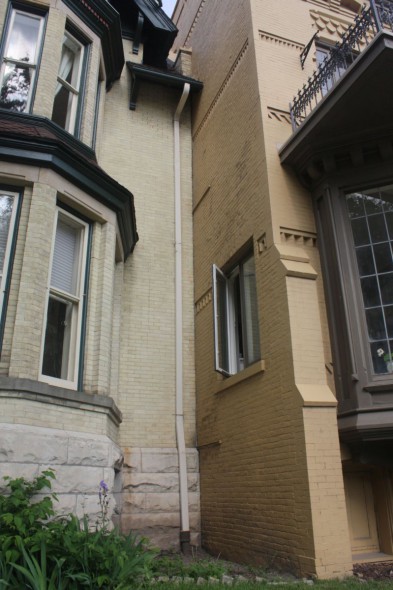
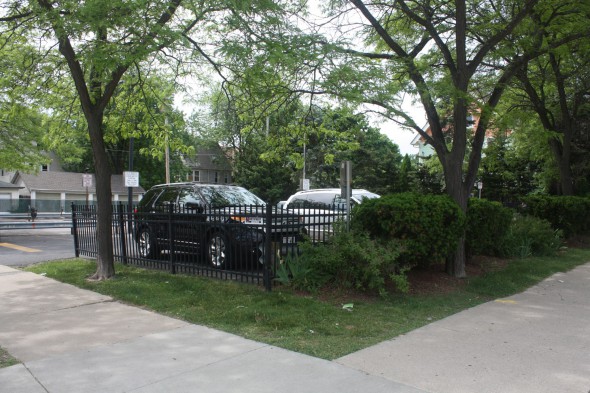
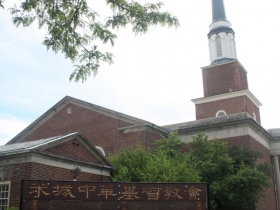
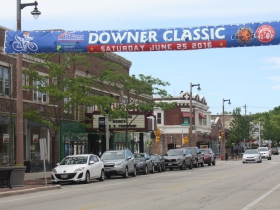
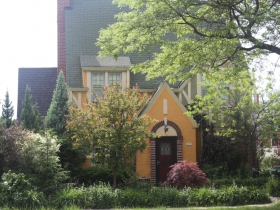
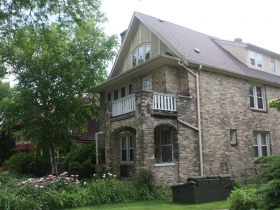
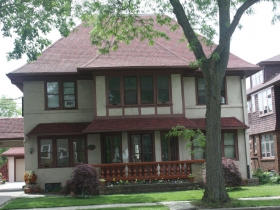
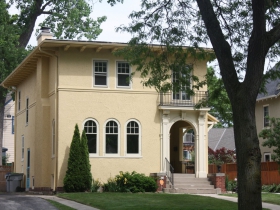


















Wasn’t this spite house on Downer Mrs. Jeske’s house? She was a Downer avenue fixture and famous cat lady. She had a black standard poodle and would stop at the drugstore where I worked and buy him an ice cream sandwich. She had too many cats and that’s why the house had to be torn down.
When I was in grad school back in the 1960s some other friends, also grad students, lived in the Ettenheim house. It was painted yellow on the lower and upper levels with brown in the middle. These guys called it the “s**t sandwich.” We hung out at the Tuxedo Bar across the street to the south.
The spite house on Downer was owned by a lady named Mrs, Jeske. She was a Downer Ave. fixture and a cat lady. She used to walk her standard black poodle and stop at the drugstore where I worked at to buy him an ice cream sandwich. She had too many cats and they had to tear the house down due to that. I don’t know what happened to her though.